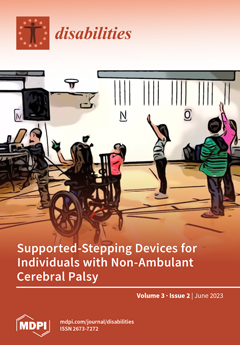Background: Participation is often defined as taking part and being included in different areas of life. Leisure represents an important area of life for all people. People with disabilities have the right to experience leisure time in a self-determined manner. They have the right to participate in leisure activities on an equal basis with others. Due to various influencing factors, people with intellectual disabilities, especially those with severe to profound intellectual disabilities, are at risk of decreased participation. This is alarming because participation in leisure activities reflects quality of life.
Purpose: The present study aims to review the empirical findings on leisure participation and its influencing factors in people with mild to moderate disabilities as compared to people with severe to profound intellectual disabilities.
Method: A scoping review following the PRISMA-ScR checklist by Cochrane and the Joanna Briggs Institute (JBI) was conducted to examine research studies published in peer-reviewed journals between 2000 and 2022. The studies that were included relate to activities within the everyday leisure time of people with intellectual disabilities, regardless of age, gender, or severity of their cognitive disability. The categories of vacation and tourism were excluded so as to focus on everyday leisure. The sample was screened by two reviewers independently. In total, 27 articles met the inclusion criteria, with 21 articles referring to people with a mild to moderate intellectual disability and only six articles referring to people with a severe to profound intellectual disability. The evidence was summarized with a predefined standardized charting form, which was used by the two reviewers.
Results: The results show that participation in leisure activities by people with intellectual disabilities can be limited, especially for those with severe to profound intellectual disabilities. This contradicts the guiding principle and human rights of inclusion and self-determination. Their participation in leisure time is extremely dependent on external factors, such as support people, leisure time availability, and form of living. Passive activities at home are often provided for people with severe to profound intellectual disabilities in particular; therefore, the need for interactive and self-determined leisure opportunities in the community is enormous. Various factors influencing leisure participation can be identified.
Implications: The findings of this scoping review can be used to consider intervention, support, and barriers to enhancing leisure participation among people with disabilities as an important area of life.
Full article





